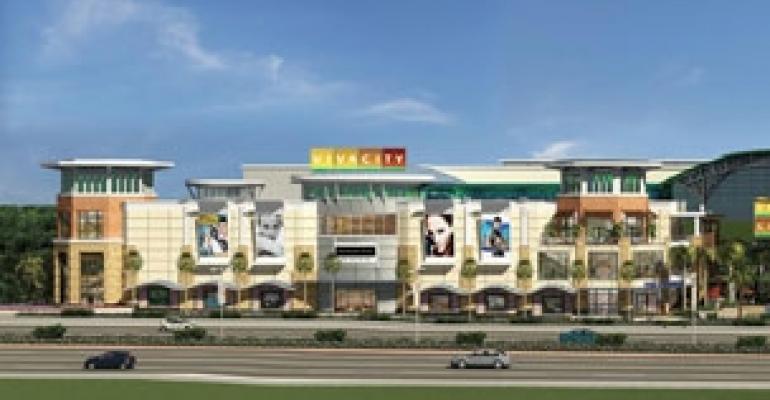The shifting economic and political landscape has been a game-changer for shopping center developers.
Developers are increasingly adopting defensive strategies to protect themselves from market uncertainty, slower economic growth and weak consumer spending in mature markets in the U.S. and across much of Western Europe. Yet developers are singing a different tune in emerging markets where, in order to compete in the building boom, developers are realizing that the most effective strategy is to go big or go home.
The continued financial crisis in Europe and saturation of retail in the U.S. is clearly fueling the push into new markets. “When you talk about developing in the U.S. and Canada and the U.K. and other mature markets, there isn’t a lot of new ground up development,” says Rich Hauer, a managing director at BDO Consulting in New York City. That is a factor of the economic downturn, as well as an abundant supply of retail space in many of those developed markets, he adds.
In fact, 19 out of 34 European markets experienced a drop in shopping center construction in 2011 compared to prior year activity, according to a shopping center report by Cushman & Wakefield. Shopping center completions in Europe are expected to total approximately 62.4 million sq. ft. in 2012, which is down from the roughly 73.2 million sq. ft. that was completed in 2011.
That decline in activity is not a big surprise, considering that much of the European Union is still battling weak consumer spending, fiscal austerity and high unemployment as it struggles to pull out of recession. The pullback is further proof that developers are moving cautiously in a still volatile market.
Mature markets warrant caution
Large institutional developers in particular are continuing to opt for the safety of defensive market positions. Developers are focusing on infill locations in top markets with strong market demographics and traffic counts. “Developers are spending their energy making sure that they are putting up the right product in the right place,” Hauer adds.
The focus for many developers in the U.S. and Western Europe has been on the redevelopment, repositioning or expansion of existing centers. Across Western Europe, expansions of existing centers account for 30 percent of the pipeline for 2012 and 2013. In the U.K., that volume is close to 45 percent, according to Cushman & Wakefield.
Particularly in mature markets in the Europe and the U.S. developers are opting for more conservative development strategies amid uncertain times. “I’d define the current mood as one of cautious opportunism,” says Bryan Roberts, director of retail insights at Kantar Retail in London. “In many markets there has been a distinct shift away from out-of-town greenfield developments to more urban projects focused around regeneration.” One example of how successful such strategies can be is Westfield’s new 1.9-million-sq.-ft. Stratford City. The urban retail project, which opened last September, is situated in a trade area of roughly 4.1 million people in urban London.
Developers follow growth
Developers are adopting more aggressive strategies in order to compete in emerging markets where shopping center construction is flourishing. Development is very active in emerging markets such as China, India, Indonesia, Turkey, Saudi Arabia and Latin America.

For example, the pipeline of retail projects under construction this year in China totaled 98.7 million sq. ft. across 18 cities, while India is reporting some 12.3 million sq. ft. of retail construction among eight cities, according to Cushman & Wakefield.
China is seeing aggressive development in its tier one cities such as Shanghai, Beijing and Guangzhou, as well as increasing interest in tier two cities such as Tianjin, Nanjing and Hangzhou. “The pattern of population migration in China, like other markets, dictates where the development will happen, and China is seeing a big shift of population moving to the coastal cities. So, developers are responding to meet those market needs,” says Rasheed.
That is not to say that developers in emerging markets are throwing caution to the wind. Developers are certainly taking a page from the defensive play book in pursing the best locations in markets that have large populations and growing disposable incomes.
Although there are a variety of shopping center projects underway and proposed, the predominant theme is to focus on tier 1 cities. In Indonesia, for example, the major markets such as Jakarta and Surabaya are front and center. “Development is going into the prime real estate, because there is still a lot of growth happening there,” says Ahsin Rasheed, CEO of Baltimore-based Development Design Group (DDG). In a city such as Jakarta, which has a lot of high-end shopping centers, they can absorb more high-end shopping center space, because the population is growing and the market is expanding.” The population in Jakarta currently tops 9.6 million people.
The same is true for India and its major cities such as Mumbai, New Delhi and Bangalore. “You are seeing a lot of growth there as well, because those cities have a lot of maturing to do in terms of the growth pattern and meeting the demands of the market,” says Rasheed. For example, DDG is the architect for the new Viva City Mall that opened earlier this year. The nearly 915,000-sq.-ft. mall is part of a larger mixed-use development located in Thane, a northern suburb of Mumbai.
“I think shopping center needs will continue to grow, because the market has not reached in anyway a saturation point,” says Rasheed. “There are some market segments or geographic zones in which there has been maturity of the development happening. But overall there are a lot of geographic zones and sectors that have in no way seen maturity.”
A detailed look at how international investors will approach constructing new retail centers will be the subject of the Global Shopping Center Development Prospects for the Next Decade panel at the ICSC Retail Real Estate World Summit.

